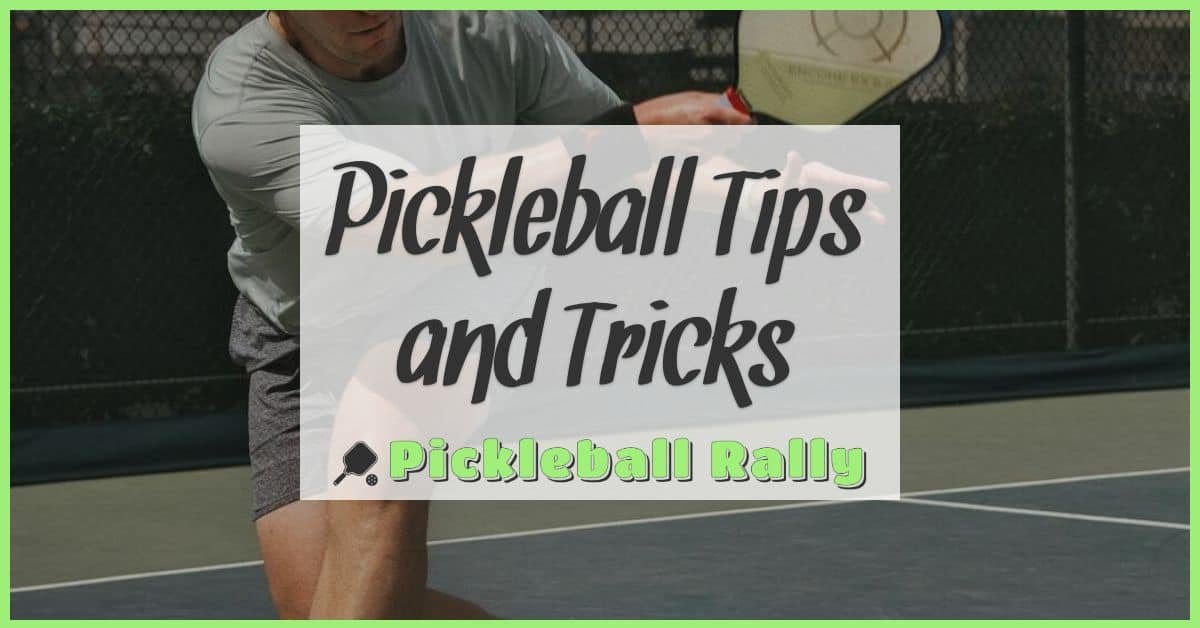Dinking can be one of the trickiest strategies to face on the court. When your opponent keeps the ball low and soft, it feels like you’re constantly chasing shadows. I’ve been there—frustrated and unsure how to break their rhythm without making mistakes.
Over time, I learned that playing against a dinker isn’t about power but patience and precision. It’s a game of anticipation and smart shot placement. In this article, I’ll share some simple tips that helped me turn the tables and stay in control when facing those crafty dinking opponents.
Understanding Dinking in Pickleball
Mastering dinking starts with knowing what it is and why players use it. I find that appreciating these nuances helps you turn the tables on opponents who rely heavily on this tactic.
What Is Dinking?
Dinking means hitting the ball softly into the opponent’s non-volley zone, aiming to keep it low and just over the net. This shot forces a delicate response because it limits aggressive returns and keeps the rally controlled. I use dinks to test patience and create openings, relying on finesse instead of power.
Why Do Players Use Dinking?
Players use dinking to slow down the pace and wear down opponents mentally. It reduces the chance of easy winners by preventing powerful smashes. I notice that consistent dinking draws opponents into making mistakes or hitting weak returns, giving me a chance to seize control. It’s a strategic way to dominate the kitchen line and control the flow of play.
Identifying a Dinking Opponent’s Strategy
Recognizing a dinking opponent’s strategy helps me anticipate their next moves and adjust my play accordingly. Spotting patterns and reading intentions create opportunities to disrupt their rhythm and seize control.
Common Dinking Patterns
I notice dinking opponents often follow predictable shot patterns. They tend to alternate dinks between my forehand and backhand court sides, aiming to pull me out of position. Many prefer targeting the middle of the court with soft cross-court dinks, forcing me to react quickly. Some players repeatedly dink deep into the non-volley zone baseline to gain time for their next move. Spotting these recurring patterns across rallies helps me predict shots more accurately.
Reading Your Opponent’s Intentions
Reading a dinking opponent’s intentions starts by observing their paddle positioning and body stance before each shot. I watch for subtle cues such as wrist angle, paddle height, and foot placement that hint at where they plan to place the dink. Opponents poised with a tilted paddle often aim cross-court, while a level paddle suggests a straight dink. I also pay attention to their rhythm and timing—changes in tempo often signal a shift in shot placement or an attempt to surprise me with a drop or a drive. Detecting these signs early allows me to react with precise positioning and set up offensive returns.
Effective Techniques to Counteract Dinking
Mastering techniques to counteract dinking sharpens any player’s ability to regain control and shift momentum. Applying these strategies turns patience and precision into consistent advantages against dinking opponents.
Maintaining Proper Positioning at the Kitchen Line
Positioning at the kitchen line demands balance and readiness. I stay slightly forward on the balls of my feet to respond quickly to dinks. Keeping my paddle up and centered between myself and the opponent reduces reaction time. Shifting laterally with subtle footwork maintains effective court coverage, preventing dinking opponents from exploiting open spaces. Controlling the kitchen line position pressures them to attempt riskier shots, creating opportunities for me.
Using Aggressive Returns and Drives
Aggressive returns disrupt a dinker’s rhythm and force errors. When I notice a pattern or weaker placement, I step in with firm drives aimed low to avoid easy volleys. Driving hard shots at the opponent’s feet challenges their ability to maintain soft control. Mixing in deep returns keeps them pinned behind the baseline. Precision targeting near their body or at corners limits their shot options while building pressure. Aggression balances patience, helping me break free from drawn-out dinking exchanges.
Incorporating Lobs and Angles
Lobs and angled shots introduce variety that unsettles dinking strategies. I use angled dinks that slide toward sidelines to stretch their court coverage. When a dinker crouches low, I throw well-placed lobs to catch them off guard or force them back. A carefully executed lob creates space and opens up the net for follow-up attacks. Combining sharp angles with occasional lobs shifts momentum and prevents the opponent from settling into predictable dinking patterns.
Training Drills to Improve Against Dinking
Developing skills to counter a dinking opponent requires focused training. I’ve found drills that sharpen reaction, footwork, patience, and shot selection make the biggest difference when facing consistent dinking.
Reaction and Footwork Drills
Start with short-distance volley exchanges to simulate dinking pace and placement. I pair up with a partner and practice quick lateral movements along the kitchen line, returning soft dinks with controlled punches or resets. This drill increases my ability to read the opponent’s shot early and adjust foot placement efficiently.
Another drill involves using cone markers spaced two to three feet apart along the non-volley zone. I shuffle between cones, calling out “ready” to mimic unpredictable dinking patterns, then step into position for a dink return. Repetition improves my balance and reaction time, which helps intercept low shots and keeps me prepared for sudden direction changes.
Lastly, shadow footwork exercises without a ball build muscle memory for staying light on the feet. I practice pivoting and weight shifting, which supports quick paddle positioning when the opponent places the ball softly and low.
Practicing Patience and Shot Selection
Patience wins against dinking, so I dedicate time to drills focusing on controlled shot choice rather than power. One effective method involves rallying exclusively with dinks, aiming to avoid volleying errors while waiting for an opportunity to attack. This drill trains discipline to maintain a calm mindset and resist temptation to force aggressive shots too early.
I also set targets at the baseline or sideline during these slow rallies to improve my ability to pick precise spots for lobs or angled shots. Learning when to switch from defense to offense depends on recognizing tiny openings, and this drill sharpens that judgment.
Lastly, I practice defensive resets by returning dinks with high-arc shots to push opponents back, breaking their rhythm. Timing resets correctly creates space to reset the point and prepare for a more aggressive shot later.
Incorporating these drills consistently builds the mental toughness and technical skills needed to take control against dinking opponents.
Mental Approach and Patience During the Match
Maintaining a calm mindset keeps me sharp when facing a dinking opponent. I focus on staying patient instead of rushing shots, knowing that forcing a winner often backfires against a skilled dinker. I remind myself that dinking is a battle of precision and timing, not power.
Recognizing that rallies may last longer helps me avoid frustration. I embrace each dink exchange as an opportunity to observe weaknesses in my opponent’s placement. If I lose patience, I tend to make errors that hand points away.
Controlling my breathing when exchanges stall aids my concentration. I use slow, measured breaths to stay relaxed and ready for the right moment to attack. I picture myself as steady rather than reactive, which boosts my resilience.
Reading the rhythm of dinking helps me decide when to switch from a defensive mind to an offensive one. I wait until my opponent’s shots become predictable or slightly off-target before stepping in with a more assertive shot. Risking a drive too soon often results in easy returns.
Ultimately, patience is my secret weapon. It wears down opponents just as dinking aims to wear me down. When I combine patience with alert anticipation, I gain control, and patience transforms from a challenge into an asset.
Conclusion
Facing a dinking opponent can definitely test your patience and focus. But once you get the hang of reading their moves and staying calm, you’ll find yourself in a much stronger position.
It’s all about staying balanced, mixing up your shots, and waiting for the right moment to take control. With practice and the right mindset, those long rallies can become your biggest advantage.
I’ve learned that embracing the challenge of dinking opponents not only improves my game but also makes winning feel that much sweeter. Keep at it—you’ve got this!









